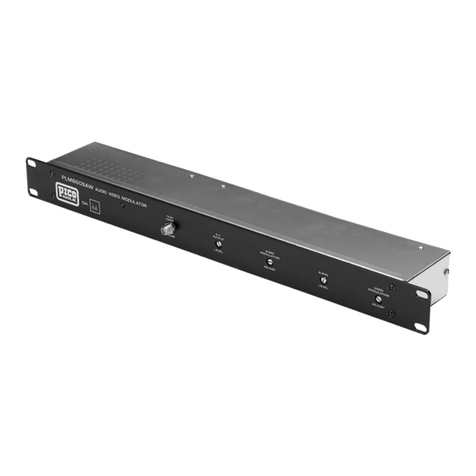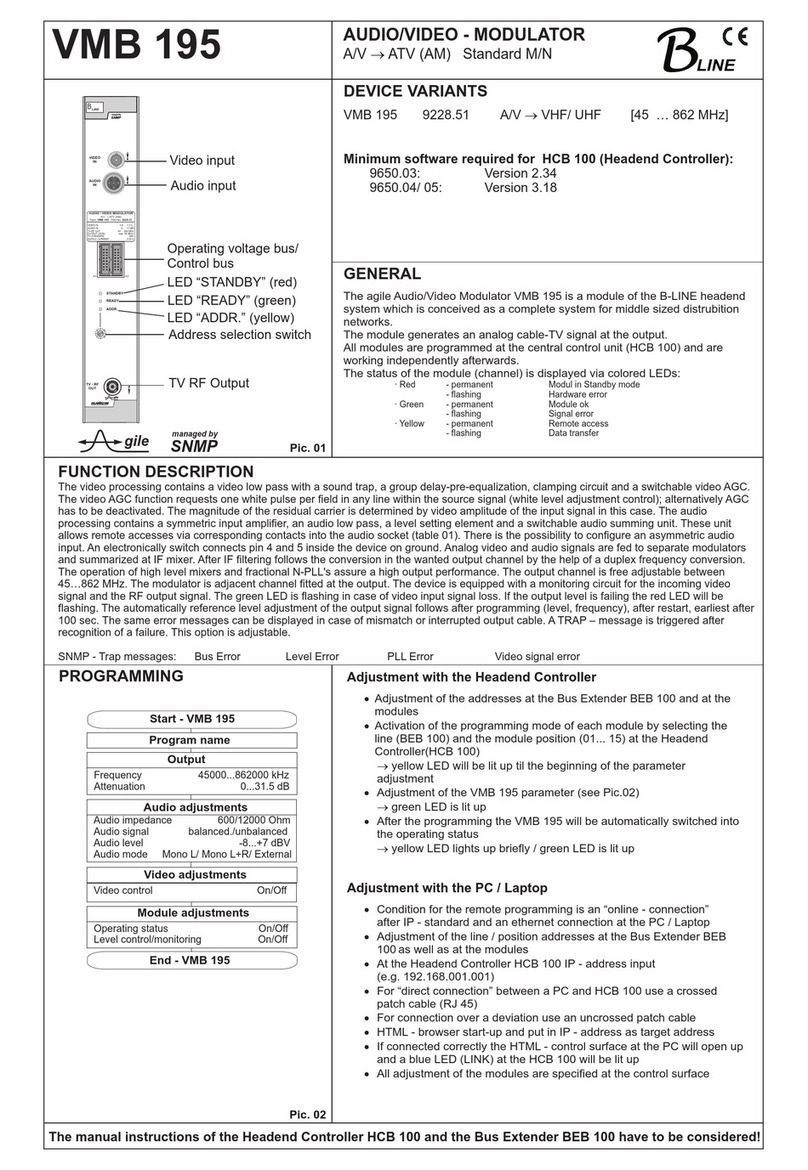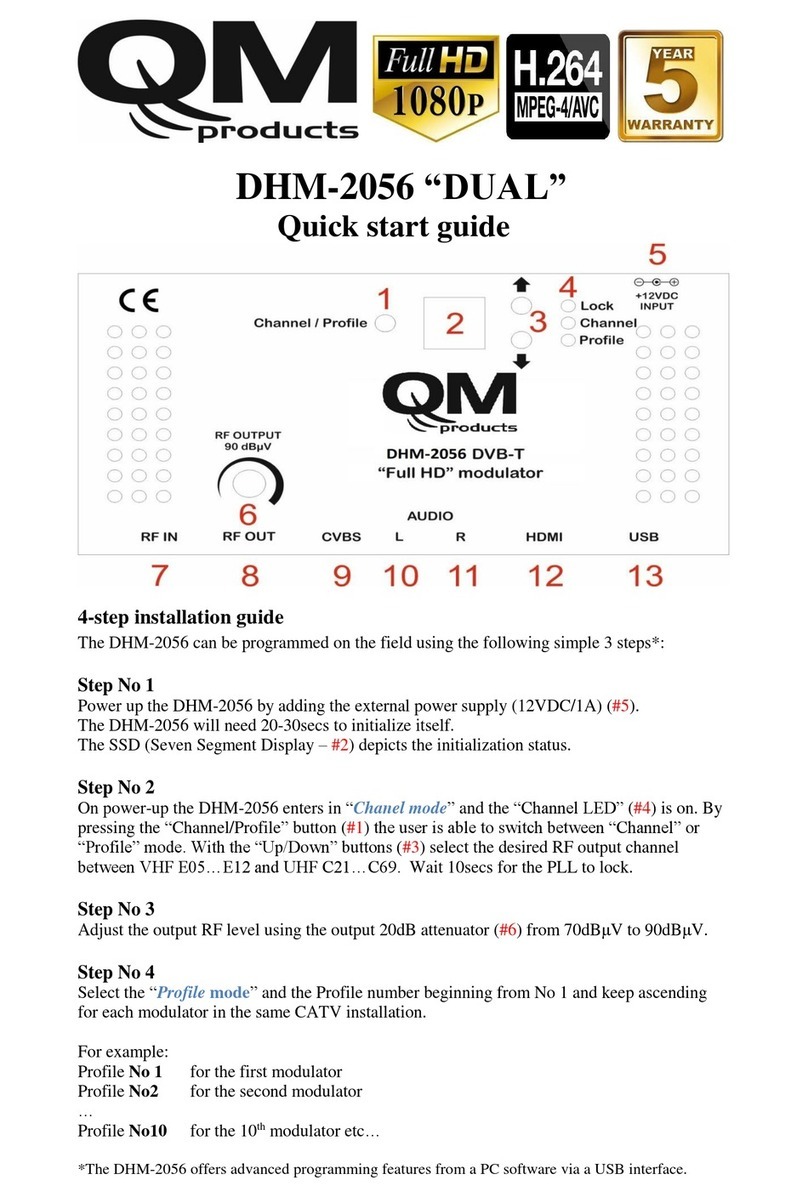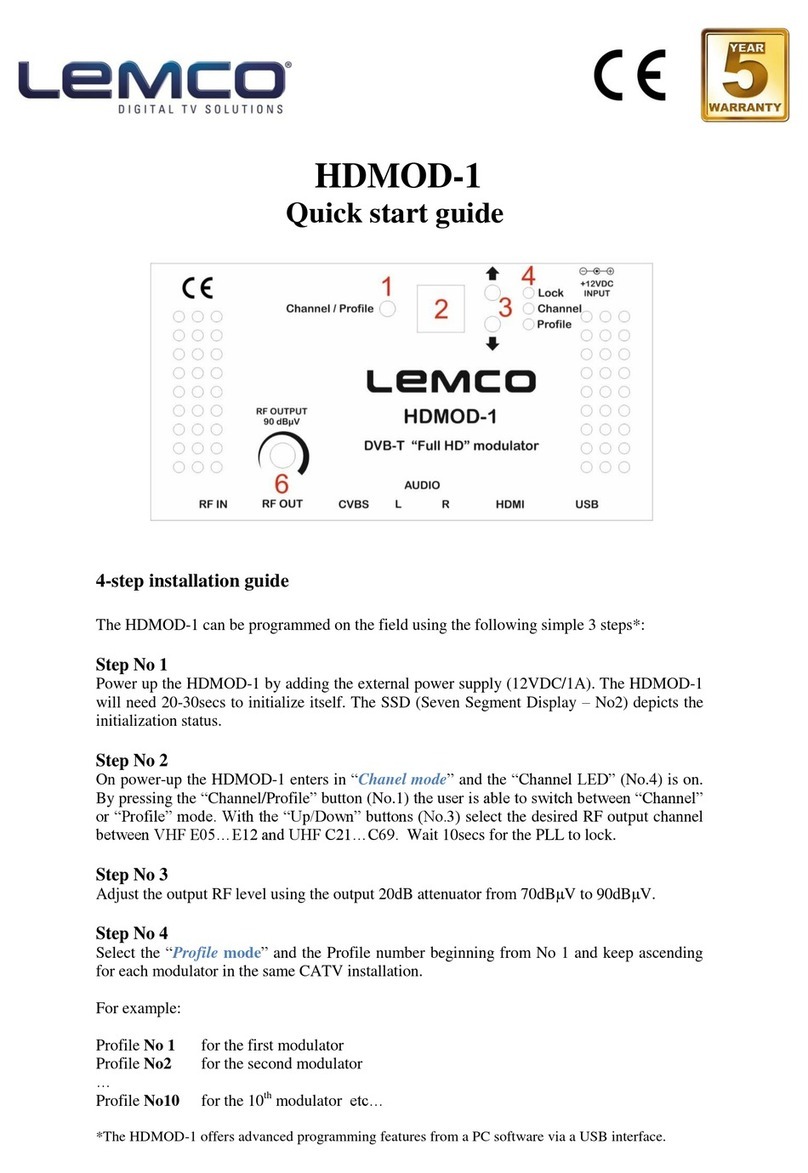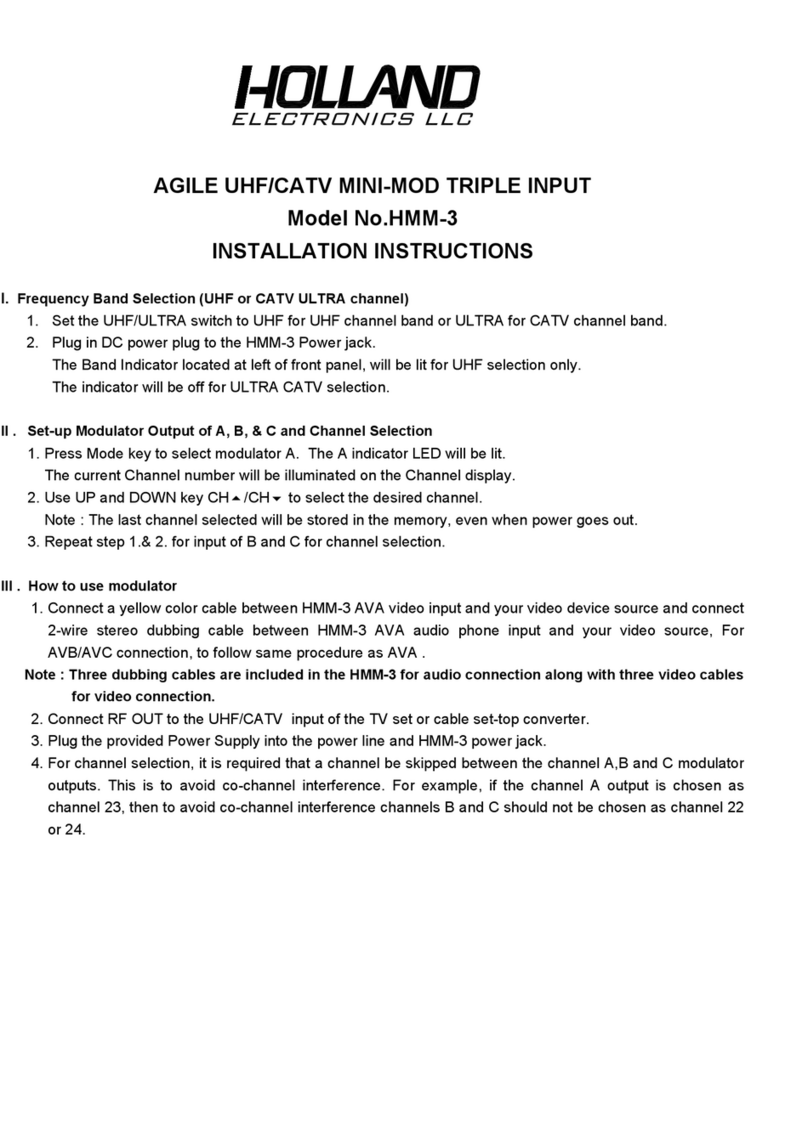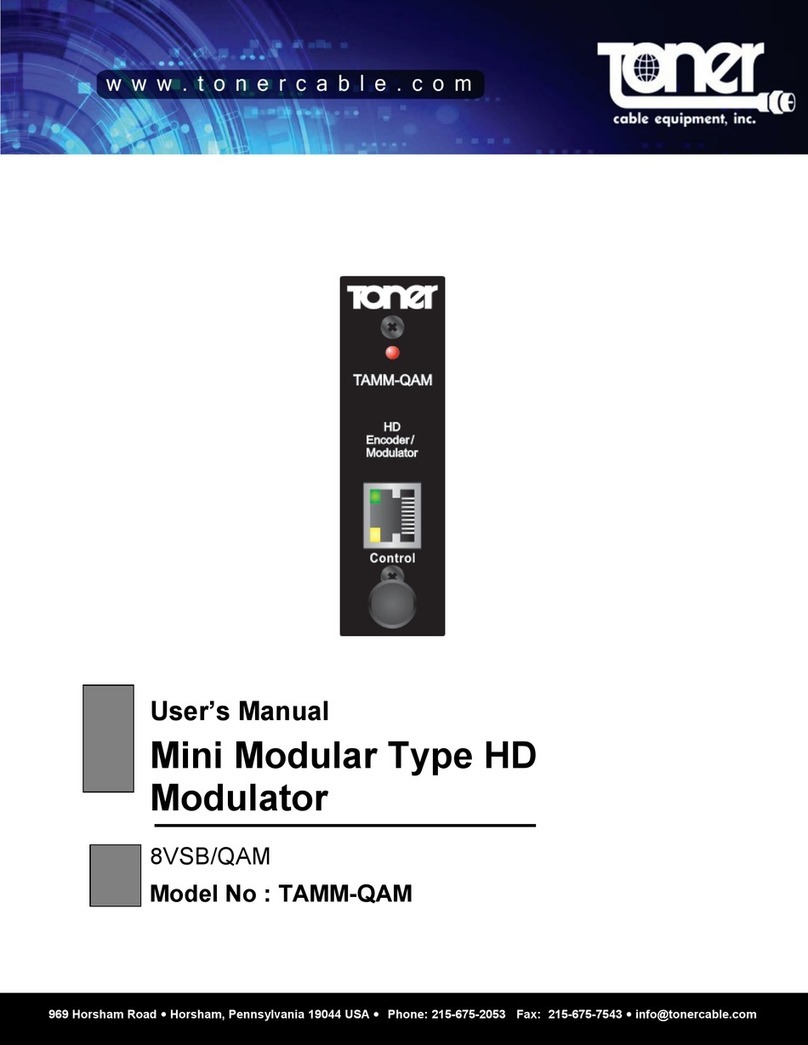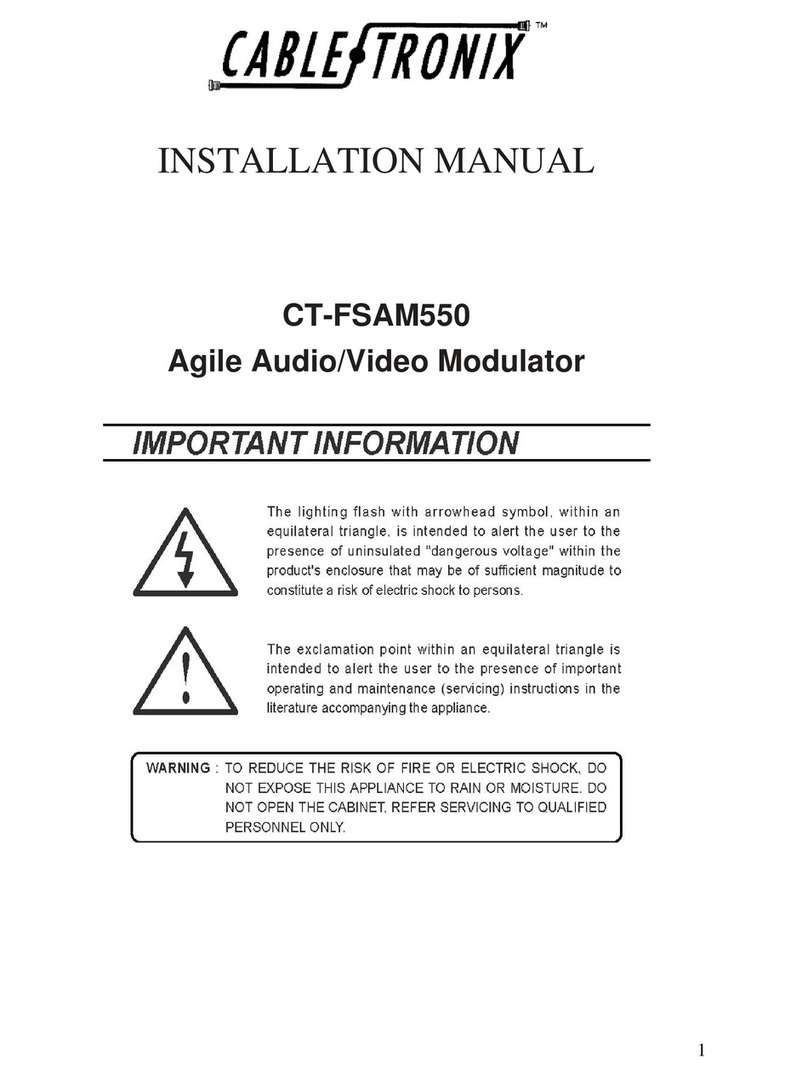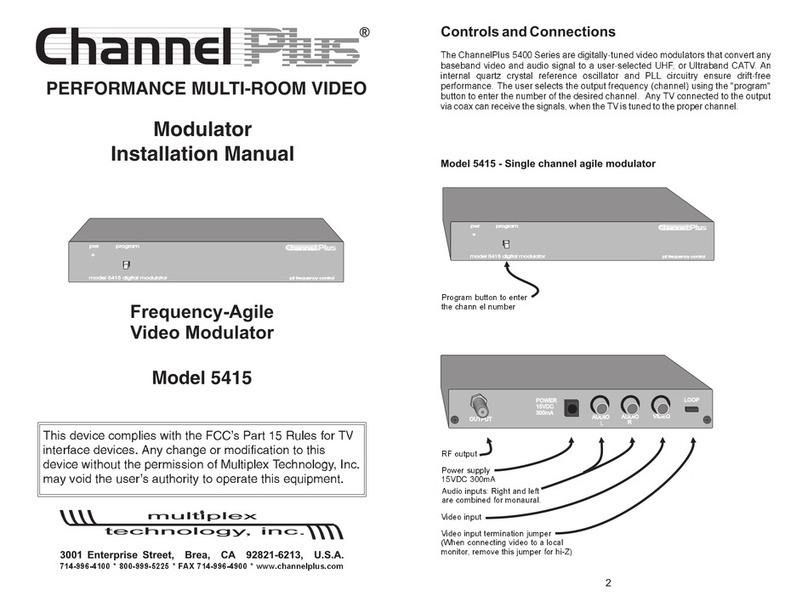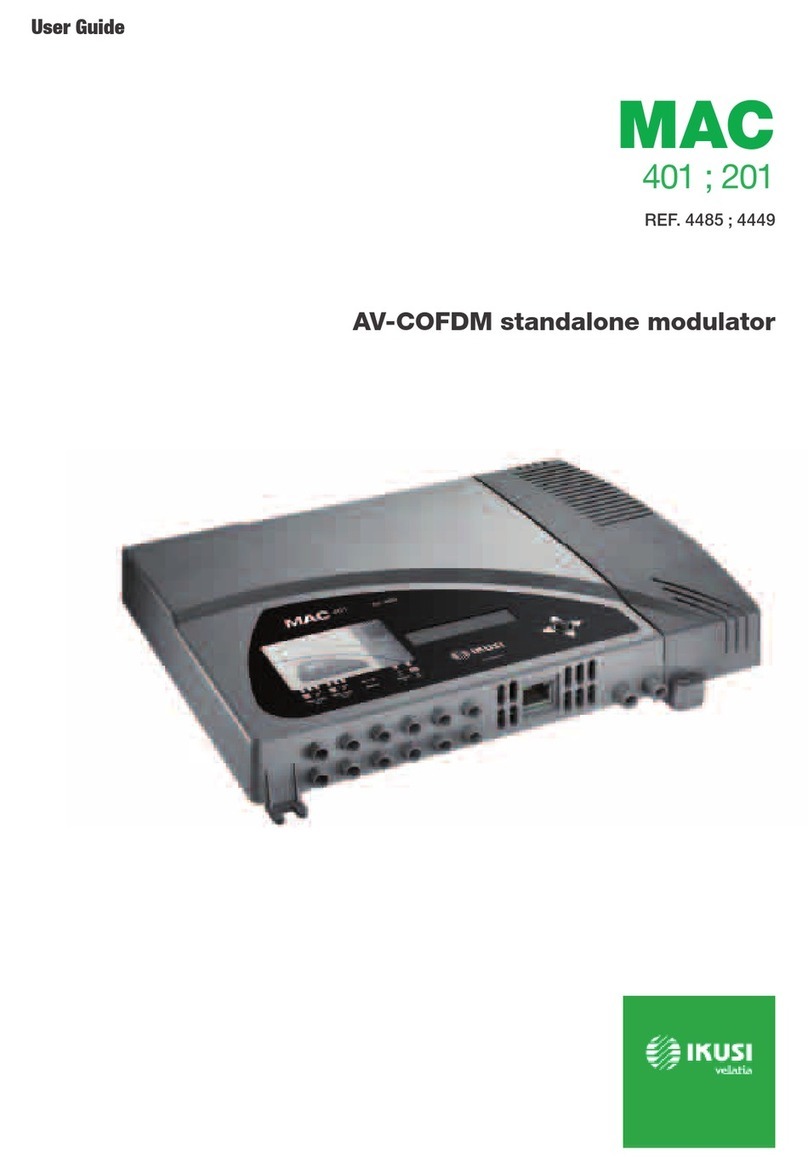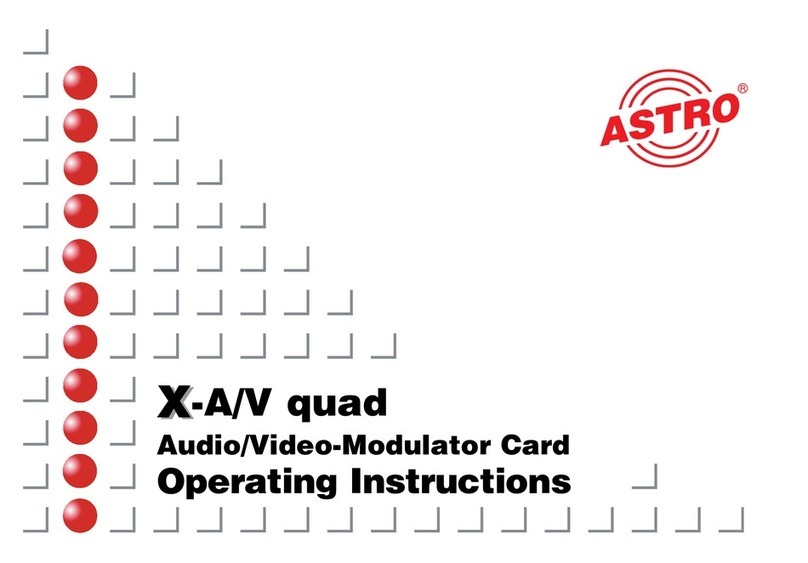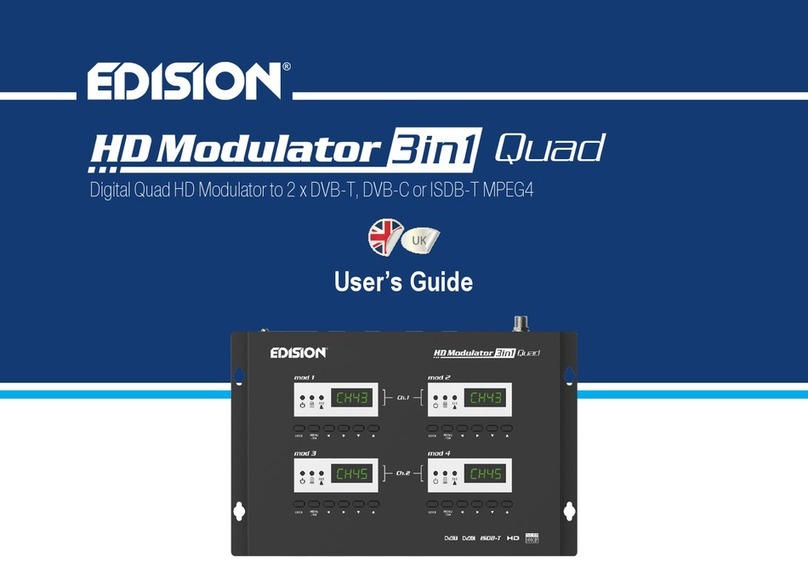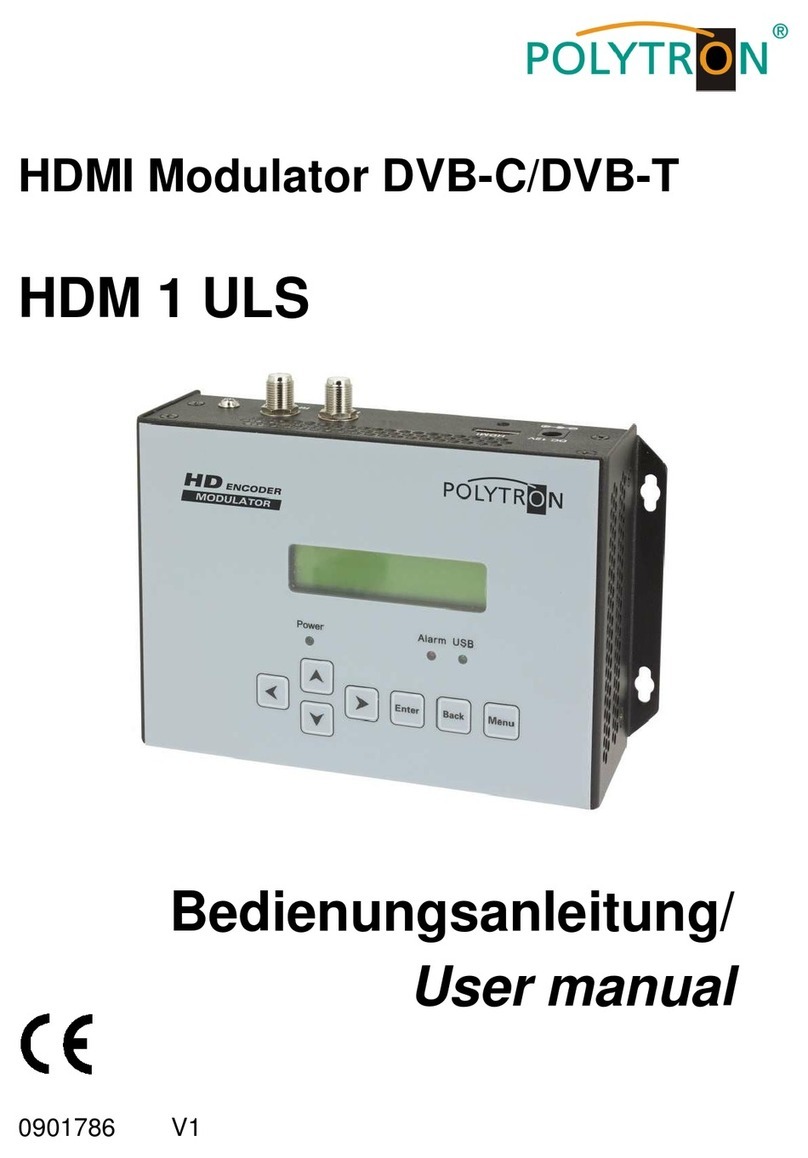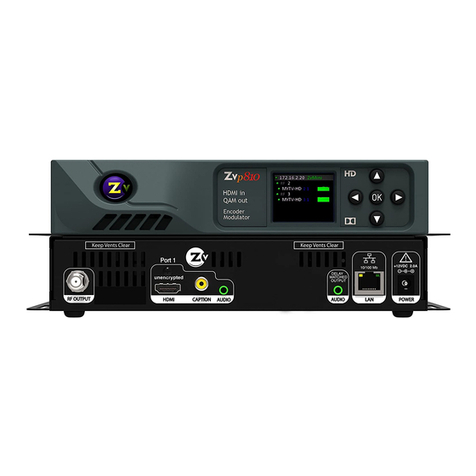Metro Modular MM315 Parts list manual

MM315 Balanced Modulator
Instruction and Operating Manual
Metro Modular
“t n r c l”
About the design
For the uninitiated, balanced modulation (some-
times called “ring modulation” after an early meth-
od of realising it) differs from a standard Voltage
Controlled Amplifier by allowing negative multipli-
cation of signals as well as positive. It was used in
many classic synths and electronic music studios
to allow the generation of dissonant metallic tones
(not to mention Daleks and Cybermen!) from two
simple input waveforms of differing frequencies.
The MC1496 modulation chip from the late
1960s has passed into legend and is still popu-
lar today, however the original Aries AR315 was
about the only use of its more sophisticated,
much better-performing, analogue computing
grade military spec sibling the MC1595L, which
is now out of production. Unlike the MC1496, the
MC1595L has low distortion and does not “lose
tone” as signal levels are increased.
We started out copying the AR315 design but
performance was poor. Eventually we worked out
that their design was lifted almost wholesale from
the Motorola datasheet (Fig. 21, trainspotters!)
and not only needed to be fully recomputed for
12V supplies, but that a change made by Aries
to facilitate input attenuators had compromised
performance. Adding a high quality op-amp buff-
er allowed these problems to be overcome while
keeping the attenuators! We also restored the Mo-
torola design’s zener-diode-reference subregula-
tors to improve power supply noise immunity and
minimise the need for recalibration.
Lastly, we decided to use old mil-spec LM101AH
or industrial spec LM201AH chips in hermetic
can packages. They did actually sound better!!
Specifications and Warranty
40mm flange depth, 60mm internal case depth
recommended as a minimum.
Power requirements:+12V at 20mA, -12V at
22mA, with short-term reverse voltage protection.
Balanced Modulator section
Inputs protected against pos/neg overvoltage
Input impedance (each channel): 100kohm
Linear control response
Maximum post-attenuator voltage differential
between channels for proper operation: +/-10V
Distortion (10Vpp, 1kHz, X, 50% gain): <0.5%
Output frequency response: DC to 100kHz (-3dB)
Output impedance (each output): 1kohm
Attenuator section
Input impedance (each channel): 100kohm max,
affected by output load and control position.
Linear control response, max +/-20V input.
Patchbay section is fully normalised
This module is warranted against manufacturing
defects for 12 months from the date of purchase.
Damage or malfunction due to: mistreatment;
mechanical shock; disassembly; unauthorised
modification, calibration or repair; reversed pow-
er supply voltage; or power supply overvoltage is
not covered by warranty. You MUST contact us
for return authorisation before sending modules
for repair.
MM315 Manual v1.01 © 2016 Justin Barrington-Higgs
Check www.metro-modular.com for updated documentation.
Metro Modular is a registered trademark.
Write to us at:
PO Box 3070, Marrickville Metro NSW 2204, Australia

Welcome and Installation
Thank you for your purchase of the Metro Modular
MM315.
The MM315 is an excellent balanced modula-
tor which can generate all sorts of clangorous
sounds when cross-modulating audio sig-
nals. It also has two independent passive at-
tenuators and a separate patchbay which can
be used to enhance your modular system.
This module has been tested and calibrated at
the factory and should reach you in perfect con-
dition. If it appears to have suffered damage in
transit then please contact the seller immediately.
This module is designed to be installed into any
standard Eurorack synthesizer as follows.
1. Carefully remove the module and attached rib-
bon power cable from the shielded foil bag.
2. Plug the module into a standard Eurorack bus-
board (not Cwejman!) with power disconnected.
Ensure that the red stripe on the power cable is
aligned to the STRIPE or -12V marker on the bus-
board connector. If the busboard uses polarised
headers (ie flying busboards or Elby) then the pow-
er ribbon cable should only be able to connect in
the right direction.
3. Turn on the busboard’s power supply while
watching any status lights on the power supply
and other modules. If ANY status lights fail to turn
on, disconnect power IMMEDIATELY and recheck
the connection of the MM315’s power cable to the
busboard.
4. Once operation has been verified, screw it in!
What it can do
Both X and Y inputs have very good linearity
and “null rejection” (the ability to prevent signal
feedthrough or “bleed” when the other input is
not active), but the X input has slightly better
performance.
Therefore if you are cross-modulating a constant
level audio source (or “carrier”) and a varying level
source (or “modulator”) such as speech, a voiced
musical instrument, an LFO or an envelope gen-
erator, connect the carrier to X and the modulator
to Y for best results.
Due to its accuracy it can be put to use as a good
quality VCA. We have had good results when the
Y input is driven by a Mutable Peaks, a CGS/Serge
Quadslope and a Doepfer A-140. As the MM315
has a fully linear response through zero, envelope
generators which do not output zero volts when
inactive may cause slight signal bleed.
The module has been factory calibrated to give
unity gain on the X input when +5V is present on
the Y input. Please turn the Y input attenuator to
about 6 when using +8V envelopes (most Euro
envelopes), and 5 when using +10V envelopes (ie
Envelator). Likewise, please turn the input attenu-
ator to 5 when inputting an audio source which
may exceed +5V or -5V, such as the output of the
MM314 or the square wave of the MM317.
The attenuators are passive linear controls that can
be used to scale control voltages or audio for unatten-
uated inputs in other modules, or can be used to drop
modular audio outputs to levels suitable for mixers.
The 4-way patchbay is ideal for distributing a sin-
gle signal to up to three other points.
Front Panel
X INPUT and Y INPUT jacks are used to
input the signals to be cross-modulated.
X INPUT and Y INPUT controls are used
to attenuate the levels of the input sig-
nals. Varying either one will proportionate-
ly control the MOD1 and MOD2 outputs.
MOD1 and MOD2 jacks output the modulat-
ed signal, and are isolated from each other.
INPUTS switch allows a choice of DC mode
where any signal (audio or control voltage)
can be applied, or AC mode where a 5Hz
highpass filter blocks steady voltages on both
X and Y inputs. AC mode should only be en-
gaged when audio signals are input on both
X and Y, and will stop carrier bleed caused by
signals with a DC component such as narrow
pulse waves. Try it!
IN jacks receive signals to be attenuated,
which are then attenuated from unity to zero
by the ATTENUATOR controls, and output
through the OUT jacks. Channels 1 & 2 are
independent of each other.
PATCH jacks are all wired together as a 4-
way patchbay, as shown. Connecting more
than one signal source at a time for passive
mixing is not recommended, as the signal
sources themselves may be damaged.
